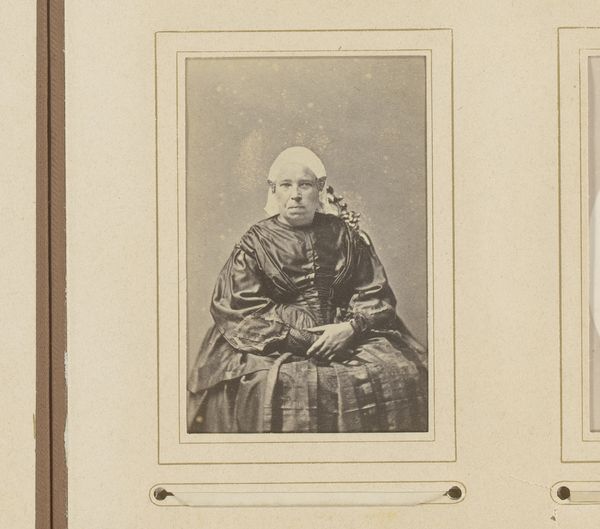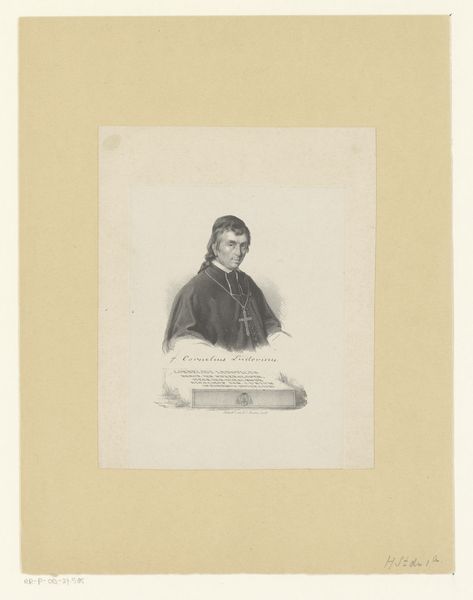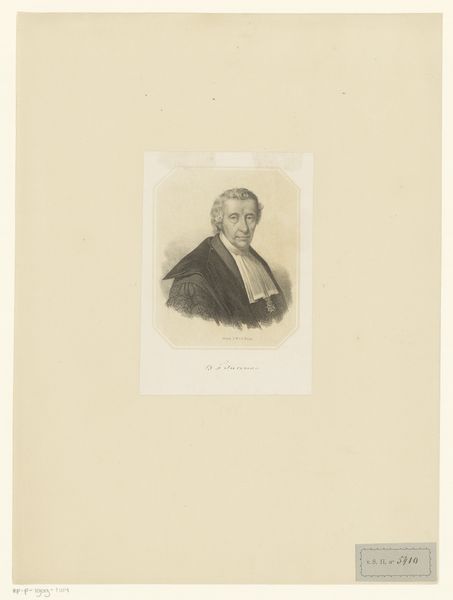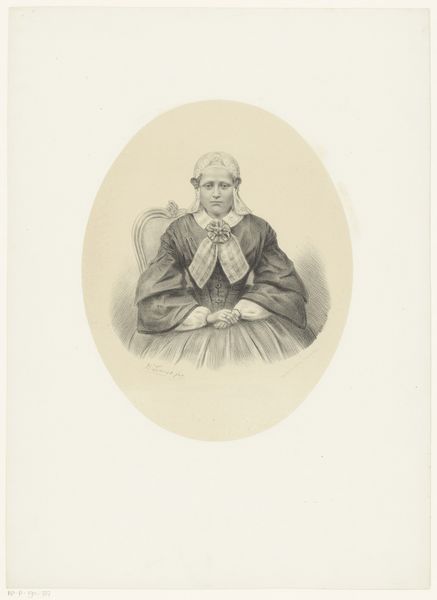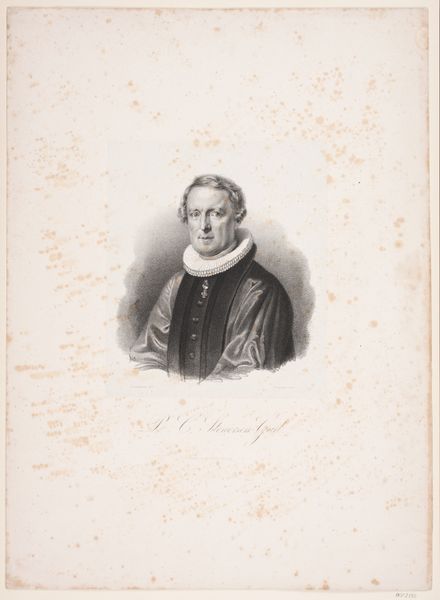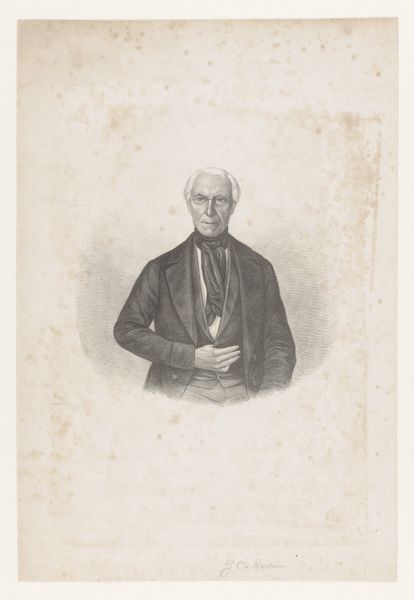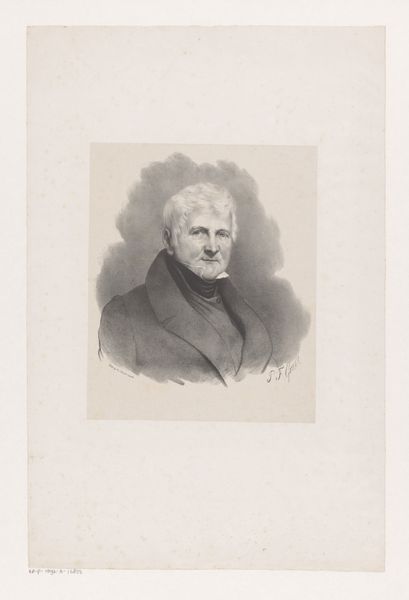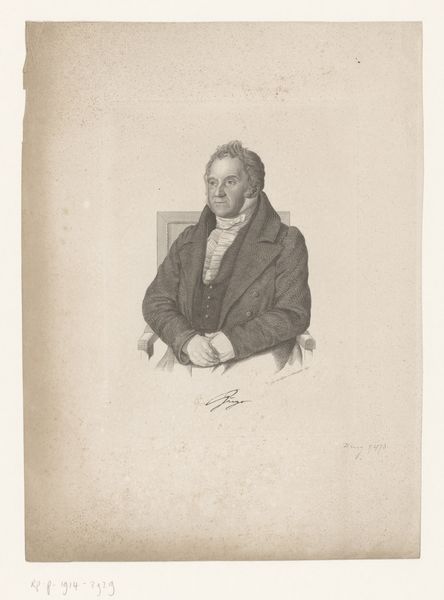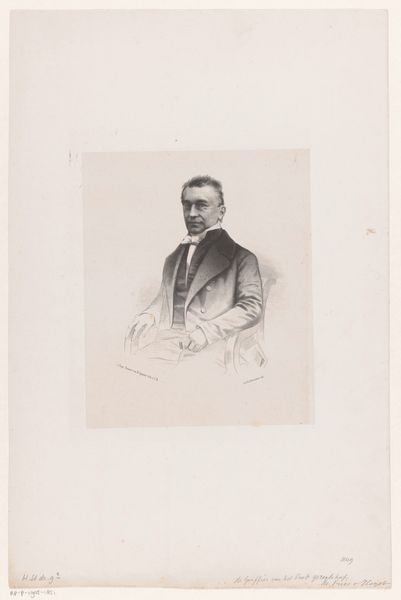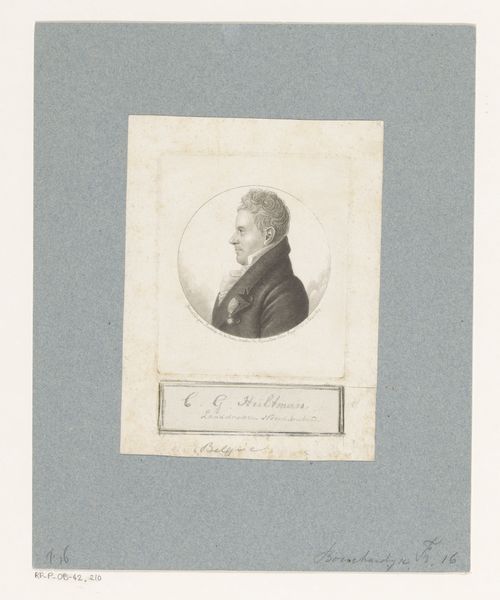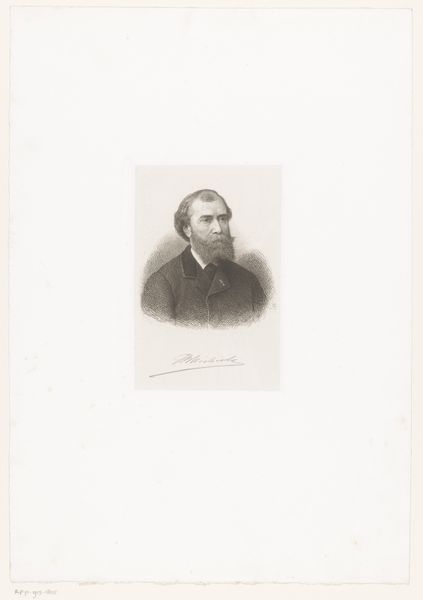
drawing, pencil
#
pencil drawn
#
drawing
#
pencil sketch
#
pencil drawing
#
pencil
#
academic-art
#
realism
Dimensions: height 483 mm, width 353 mm
Copyright: Rijks Museum: Open Domain
Editor: This drawing, "Portret van onbekende vrouw" from 1831-1863, artist Willem (II) Troost used pencil. The woman depicted looks severe. What can you tell me about this work? Curator: I see a deliberate construction of identity within the social constraints of the 19th century. Consider the pose, dress, and even the presence of a teacup – all signifiers of a particular class and role for women. How do you think the artist might be either reinforcing or subverting those expectations? Editor: I suppose I hadn't really considered those elements. The teacup does look almost staged now that you mention it. Curator: Exactly. It’s a subtle act, perhaps. Think about what it meant for a woman to have her portrait drawn at that time. It was about lineage, status, and, more broadly, the perpetuation of patriarchal structures. Could the unknown identity also suggest something about the limitations placed on women's individuality? Editor: So the artist, even with a simple pencil drawing, could be commenting on societal expectations and limitations. It gives the piece more layers than I initially perceived. Curator: Precisely. It urges us to investigate beyond the surface and consider the silent narratives interwoven with visual representation. What more can you infer? Editor: I'll definitely view these types of portraits with a different lens now. There's more than meets the eye! Curator: Agreed, seeing art as cultural artifact allows us to engage in important conversations around gender, class, and representation, allowing this to ignite much-needed reflection on today’s narratives.
Comments
No comments
Be the first to comment and join the conversation on the ultimate creative platform.
